
A physicist is a scientist who specializes in the field of physics, which encompasses the interactions of matter and energy at all length and time scales in the physical universe. Physicists generally are interested in the root or ultimate causes of phenomena, and usually frame their understanding in mathematical terms. They work across a wide range of research fields, spanning all length scales: from sub-atomic and particle physics, through biological physics, to cosmological length scales encompassing the universe as a whole. The field generally includes two types of physicists: experimental physicists who specialize in the observation of natural phenomena and the development and analysis of experiments, and theoretical physicists who specialize in mathematical modeling of physical systems to rationalize, explain and predict natural phenomena.
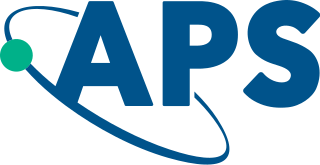
The American Physical Society (APS) is a not-for-profit membership organization of professionals in physics and related disciplines, comprising nearly fifty divisions, sections, and other units. Its mission is the advancement and diffusion of knowledge of physics. The society publishes more than a dozen scientific journals, including the prestigious Physical Review and Physical Review Letters, and organizes more than twenty science meetings each year. APS is a member society of the American Institute of Physics. Since January 2021 the organization has been led by chief executive officer Jonathan Bagger.

Applied Physics Letters is a weekly peer-reviewed scientific journal that is published by the American Institute of Physics. Its focus is rapid publication and dissemination of new experimental and theoretical papers regarding applications of physics in all disciplines of science, engineering, and modern technology. Additionally, there is an emphasis on fundamental and new developments which lay the groundwork for fields that are rapidly evolving.
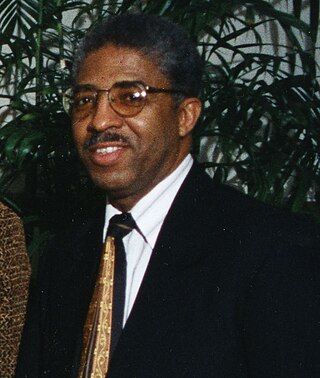
James H. Stith is an American physicist and educator. He is known for his influential roles in multiple scientific societies. He is the former vice president of the Physics Resource Center at the American Institute of Physics, a past president of the American Association of Physics Teachers, and a past president of the National Society of Black Physicists.

William Esco Moerner, also known as W. E. Moerner, is an American physical chemist and chemical physicist with current work in the biophysics and imaging of single molecules. He is credited with achieving the first optical detection and spectroscopy of a single molecule in condensed phases, along with his postdoc, Lothar Kador. Optical study of single molecules has subsequently become a widely used single-molecule experiment in chemistry, physics and biology. In 2014, he was awarded the Nobel Prize in Chemistry.
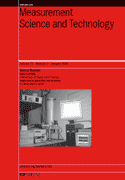
Measurement Science and Technology is a monthly peer-reviewed scientific journal, published by IOP Publishing, covering the areas of measurement, instrumentation, and sensor technology in the sciences. The editor-in-chief is Andrew Yacoot.
Albert Polman is a Dutch physicist and former director of the AMOLF research laboratory in Amsterdam.

Anthony Michael Johnson is an American experimental physicist, a professor of physics, and a professor of computer science and electrical engineering at the University of Maryland, Baltimore County (UMBC). He is the director of the Center for Advanced Studies in Photonics Research (CASPR), also situated on campus at UMBC. Since his election to the 2002 term as president of the Optical Society, formerly the Optical Society of America, Johnson has the distinction of being the first and only African-American president to date. Johnson's research interests include the ultrafast photophysics and nonlinear optical properties of bulk, nanostructured, and quantum well semiconductor structures, ultrashort pulse propagation in fibers and high-speed lightwave systems. His research has helped to better understand processes that occur in ultrafast time frames of 1 quadrillionth of a second. Ultrashort pulses of light have been used to address technical and logistical challenges in medicine, telecommunications, homeland security, and have many other applications that enhance contemporary life.
IOP Publishing is the publishing company of the Institute of Physics. It provides publications through which scientific research is distributed worldwide, including journals, community websites, magazines, conference proceedings and books. The Institute of Physics is a scientific charity devoted to increasing the practice, understanding and application of physics. Any financial surplus earned by IOP Publishing goes to support physics through the activities of the Institute.
SPINbibliographic database is an indexing and abstracting service produced by the American Institute of Physics (AIP). The content focus of SPIN is described as the most significant areas of physics research. This type of literature coverage spans the major physical science journals and magazines. Major conference proceedings that are reported by the American Institute of Physics, member societies, as well as affiliated organizations are also included as part of this database. References, or citations, provide access to more than 1.5 million articles as of 2010. SPIN has no print counterpart.
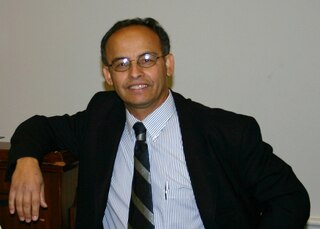
Mounir Laroussi is a Tunisian-American scientist. He is known for his work in plasma science, especially low temperature plasmas and their biomedical applications.
Ira Borah Bernstein is an American theoretical physicist specializing in plasma physics. He was the first person to formulate the theory of electrostatic waves propagating in a magnetized plasma in 1958, which are now commonly known as Bernstein waves in plasma physics.

Philip H. Bucksbaum is an American atomic physicist, the Marguerite Blake Wilbur Professor in Natural Science in the Departments of Physics, Applied Physics, and Photon Science at Stanford University and the SLAC National Accelerator Laboratory. He also directs the Stanford PULSE Institute.
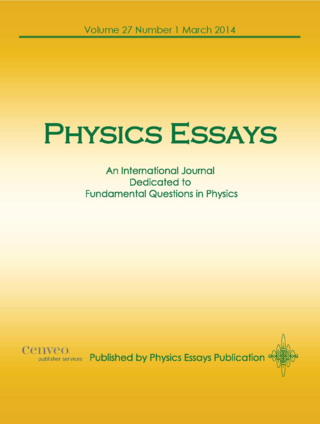
Physics Essays is a quarterly journal supposedly covering theoretical and experimental physics. It was established in 1988 and the editor-in-chief is Emilio Panarella.

Andreas Mandelis is a professor and researcher at the department of Mechanical and Industrial Engineering at the University of Toronto and director of the Center for Advanced Diffusion-Wave and Photoacoustic Technologies (CADIPT). He is an internationally recognized expert in thermophotonics. His research encompasses the non-destructive evaluation of materials with industrial and biomedical applications. He is considered a pioneer in the fields of diffusion-wave, photothermal and photoacoustic sciences and related technologies. He is the inventor of a photothermal imaging radar which can detect tooth decay at an early stage.
Kurt Kremer is a German physicist.
Miklos Porkolab (born March 24, 1939) is a Hungarian-American physicist specializing in plasma physics.

Judith Louise MacManus-Driscoll is a Professor of Materials Science at the University of Cambridge. Driscoll is known for her interdisciplinary work on thin film engineering. She has a particular focus on functional oxide systems, demonstrating new ways to engineer thin films to meet the required applications performance. She has worked extensively in the fields of high temperature superconductors, ferroics and multiferroics, ionics, and semiconductors. She holds several licensed patents.
Kate Page Kirby is an American physicist. From February 2015 to December 2020, Kirby was the chief executive officer of the American Physical Society (APS) and sits on the board of directors of the American Institute of Physics. Kate Kirby was elected a fellow of the American Physical Society (APS) in 1989 for her "innovative application of methods of quantum chemistry to the quantitative elucidation of a diverse range of molecular phenomena." She was made a fellow of the American Association for the Advancement of Science (AAAS) in 1996 for her contributions to physics.
Ravindra Nath Sudan was an Indian-American electrical engineer and physicist who specialized in plasma physics. He was known for independently discovering the whistler instability in 1963, an instability which causes audible low-frequency radio waves to be emitted in the magnetosphere in the form of whistler waves. He also pioneered the study of the generation and propagation of intense ion beams, and contributed to theories of plasma instabilities and plasma turbulence.













